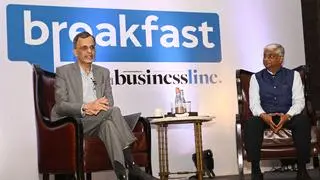Debt to the tune of ₹7.4 lakh crore held by corporates, which incrementally built non-productive assets between FY11 and FY16, face the risk of cash flow recovery, according to a report by India Ratings.
Of this, debt to the tune of ₹4 lakh crore is held by corporates that are vulnerable and would find repaying debt challenging while the remaining ₹3.4 lakh crore, though in the hands of safer corporates, would eat into shareholder returns.
The primary contributors to this ₹7.4-lakh-crore sector-wise include — telecom 27 per cent, infrastructure and construction 18 per cent, metals and mining nine per cent, real estate seven per cent, consumer durables and diversified six per cent each, pharma four per cent, oil and gas four per cent, trading three per cent, sugar two per cent, auto one per cent, power one per cent and others 12 per cent.
Despite an economic recovery, this ₹7.4-lakh-crore debt would be unable to generate higher return on capital employed than the cost of capital, the report observed.
This meant that vulnerable corporates — the ones having debt worth ₹4 lakh crore — had seen a decline in the proportion of their fixed assets to total assets to 52 per cent in FY16 from 71 per cent in FY11.
‘Maximum risk’The rating agency further observed that the ₹4-lakh-crore debt held by 85 of the 240 vulnerable corporates faced the maximum risk of a write-off as their assets were non-productive and required deep restructuring.
Benefit from economic recovery would be marginal and these firms have to address cash flow mismatches and a relatively high proportion of non-productive assets to restore debt sustainability.
Banks may find it difficult to fit them in the Scheme for Sustainable Structuring of Stressed Assets, popularly called S4A.
Infrastructure and construction, sugar, consumer durables, engineering and equipment, airlines and trading firms primarily fell in this category.
The agency found that vulnerable corporates — 155 in number — with productive assets held debt worth ₹8.4 lakh crore and had the capacity to turn around with economic revival generating returns on capital employed higher than their cost of capital.
These firms belong to the metals and mining, oil and gas, power, and textile sectors.
Finally, India Ratings observed that the ₹3.4-lakh-crore held by 26 non-vulnerable corporates (mainly in real estate and telecom) had a relatively high proportion of non-productive assets. Incremental debt to these corporates would weaken their credit profile and they could potentially slip into the vulnerable category.
Strong parental support and/or low volatility in cash flow differentiate these corporates from their vulnerable counterparts besides provide them access to debt markets. Equity investment could be used for deleverage and improve their capital structures.
Summing up, the rating agency said that 234 corporates in the auto and automotive supplier, cement, chemical and pharmaceutical sectors were the most resilient.
Though they held debt of ₹13.4 lakh crore, they had strong profitability, healthy capital structure and asset quality levels — key driver of a revival in private sector investments.







Comments
Comments have to be in English, and in full sentences. They cannot be abusive or personal. Please abide by our community guidelines for posting your comments.
We have migrated to a new commenting platform. If you are already a registered user of TheHindu Businessline and logged in, you may continue to engage with our articles. If you do not have an account please register and login to post comments. Users can access their older comments by logging into their accounts on Vuukle.